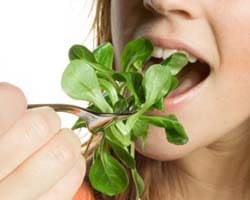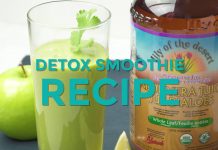
Do you ever wonder what’s actually going on in your body when you eat? How do you get the nutrients from your food? Here’s a little Digestion 101 for you.
If most of the food you ate was able to move directly into your bloodstream it would be as deadly as poison. That’s where a very important process called digestion comes in.
Think of the digestive system as a food ‘disassembly’ plant. It breaks apart almost everything you eat into smaller pieces so that your body can absorb the nutrients. It converts protein from foods like meat, nuts and seeds into amino acids, large carbohydrates such as potatoes into simple sugars called glucose and salad into vitamins and minerals. It then passes these nutrients into your bloodstream. Without digestion, you could eat everything in sight and still starve to death.
Ask most people where digestion starts and chances are they will say their stomachs. The truth is that digestion actually starts in your mouth when you smell or even think about food. When we smell or think about food we begin to salivate and in our saliva is the digestive enzyme amylase. Amylase begins to break down carbohydrates in your mouth. The key is to take the time to enjoy your food and to chew your food well (until it is a mushy paste) so that amylase can do its job effectively.
Once your food is chewed it moves from the mouth down the esophagus into your stomach. At the lower end of the esophagus, is a one-way valve called the esophageal sphincter, it prevents the backsplash of stomach contents moving upward into the esophagus. If this valve does not work well, heartburn is likely to result.
The stomach is basically a storage tank. It’s about 25cm long and can hold up to 4 litres of food at a time. It churns and mixes up food, breaking it down into smaller pieces. Along the lining of the stomach there are gastric pits which release gastric juice. Gastric juice contains hydrochloric acid needed to kill microorganisms, lower the stomach pH, initiate protein digestion and make certain nutrients more soluble.
When the partially digested food and acid get mixed in the stomach it is called chyme. Chyme slowly passes through the pyloric valve at the bottom end of the stomach and into the duodenum. This is where the extraction of nutrients begins. Depending on the contents of the meal and the quantity of food, the stomach will break down food into chyme anywhere between 40 minutes and a few hours.
The duodenum is located at the top end of the small intestine which is the longest section of the digestive tract at over 6 meters long. It is here that the final process of nutrient absorption takes place. The entire small intestine is lined with an elaborate set of muscles which are never at complete rest. These muscles continually contract and move contents down the small intestine and through the colon, similar to a conveyor belt. This movement is called peristalsis.
It is in the small intestine that the rest of the digestive enzymes begin to digest protein, carbohydrates and fat into usable components for the body.
The wall of the small intestine is covered with billions of microscopic finger-like projections called microvilli. They increase the absorptive surface by an estimated 600%. It is here that nutrients are absorbed into your bloodstream. Each villi contains a lymph vessel surrounded by capillaries. The lymph vessels are the 'connecting passageways' in the body between the blood and tissues and this is how food material and oxygen are brought to the individual cells.
Last but not least is the colon. It is also called the large intestine because of its wider diameter. The colon is about 1.5m long and there is little nutrient absorption that happens here. Its main job is to absorb the excess water from the intestinal waste and recycle it back into your bloodstream, similar to a ‘water treatment plant’. As the liquid waste moves along, it dries and forms stool which is then excreted.
Now that you have a better understanding of how the digestive system works, take steps to make the most of it. Slow down and enjoy your meals. Savor the sight, smell and taste of your food, chew thoroughly and if you are having problems digesting, look into supplementing with digestive enzymes.










